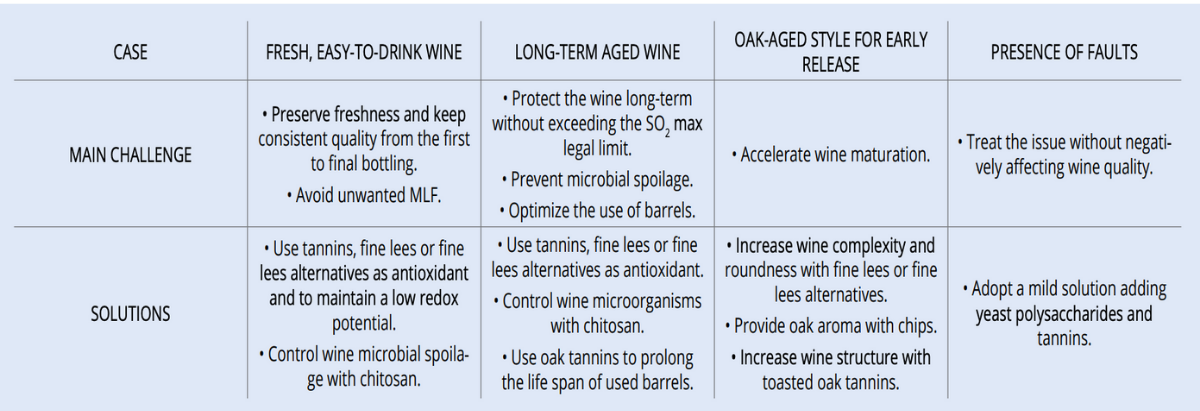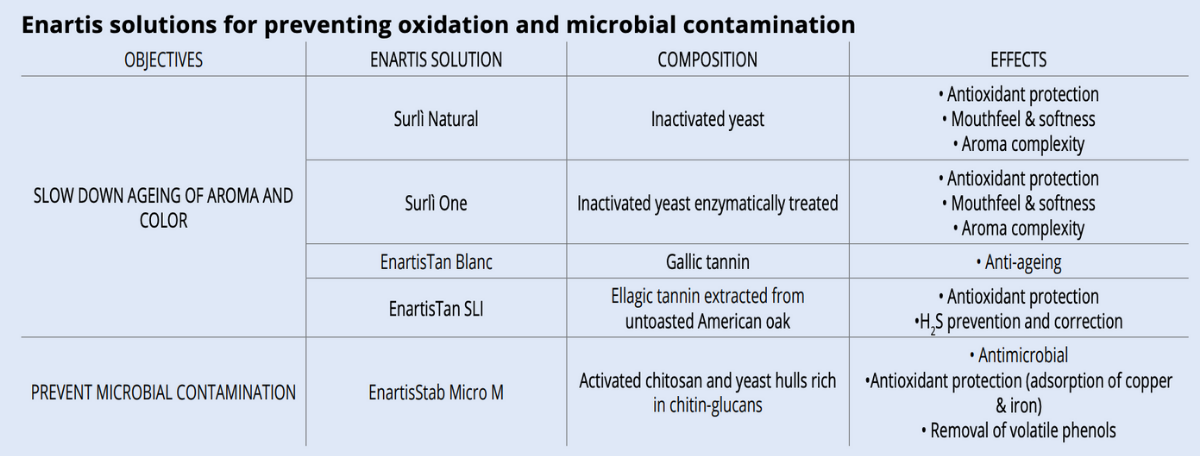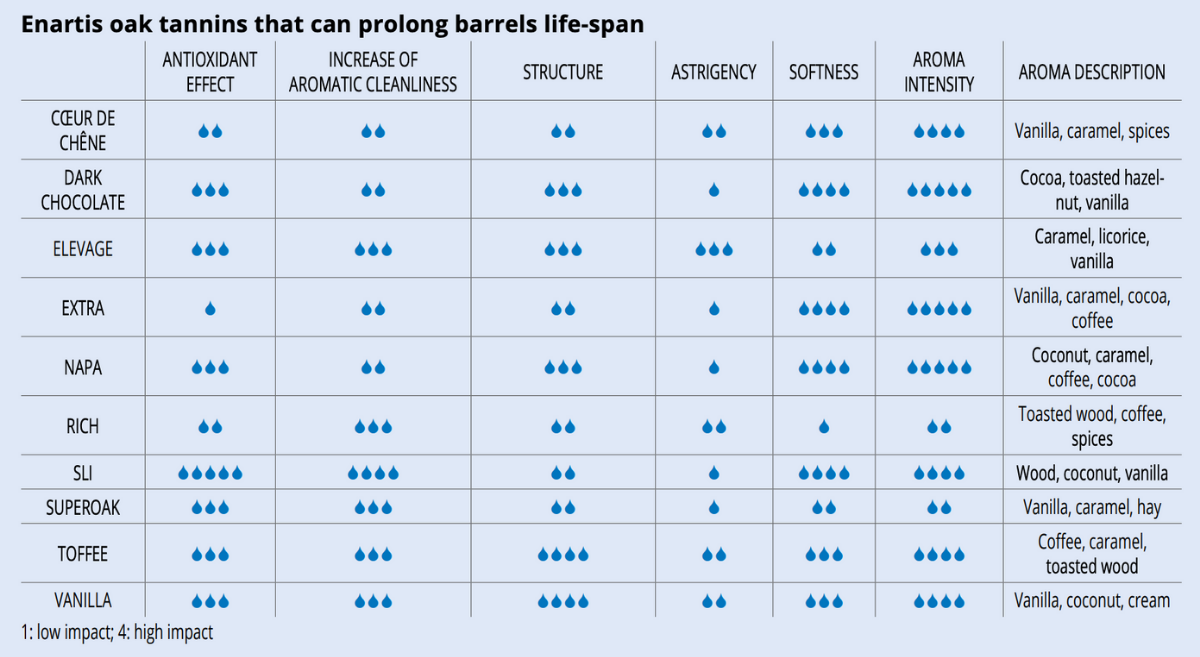Enartis News – Small changes now can provide big results later
Once fermentations are finished, it’s time to evaluate wine quality and decide the destination of each wine: for early release or long-term ageing, fresh and fruity or oak-aged style. This is also the moment when various faults become evident. In this phase, it is possible to adopt easy, time-saving and quality solutions that redirect wine to the right track.
Let’s consider 4 common situations:
- Fresh and easy-to-drink wine
- Wine destined for long-term ageing
- Oak-aged wine style for early release
- Wine with fault

FRESH, EASY-TO-DRINK WINE
With this kind of wine, the biggest challenge is to guarantee the fresh, young character from the first bottling to the last given that this can take place over the span of one year after harvest. The main technical objectives of the maturation phase are:
Slow down ageing of aroma and color.
This means protecting wine from oxidation. Besides inert gasses and SO2, there are other effective, healthier and reasonable solutions:
- Fine lees, from the fermentation or added as inactivated yeast, can consume dissolved oxygen and maintain a low redox potential.
- Tannins can be used as antioxidant alternatives to SO2. Gallic tannins and some untoasted oak tannins are very effective without impacting wine sensory quality.
Prevent microbial contamination.
Unwanted malolactic fermentation onset or the growth of spoilage microorganisms can lead to a loss of freshness or the production of off-flavors that can mask the fruit characters of wine. SO2 additions, low temperatures, filtration and sanitization of tanks and equipment help to minimize the risk of contamination.
- Chitosan is a new tool that can be used to control a wide spectrum of microorganisms. It is vegan and allergen free and can be used to partially or completely replace SO2.

WINE DESTINED FOR LONG-TERM AGEING
The main goal of long-term ageing is to get complexity from the development of tertiary aromas and integration of flavors. These are the critical points:
- SO2 management. It is necessary to protect wine without increasing the level of total SO2 close to the maximum legal limit. Storage on fine lees, the use of tannins with antioxidant effects and the antimicrobial effect of chitosan help to reduce the addition of SO2.
- Preventing spoilage microorganism contamination, particularly Brettanomyces, is another goal that can be tough to manage, especially in the case of barrel ageing. Before transferring wine to barrels or when cellar temperatures increase in Spring, adding a small amount of chitosan is a good practice.
- Ageing in used barrels. After ageing two or three wines, oak’s capability of releasing tannins and oak characters is much lower and not sufficient to guarantee the same effect on structure and aromatic complexity. The use of oak tannins can compensate for the lack of oak components.

OAK-AGED STYLE FOR EARLY RELEASE
When the objective is to get a complex, oaky aroma with a soft and full body in a short amount of time:
• the addition of inactivated yeast gives the effect of sur lies ageing in just a few weeks- more aromatic complexity, roundness and volume on the palate;
• oak chips can easily modify the oak profile;
• toasted oak tannins complete the effect of chips increasing wine structure and accelerating maturation.

WINE WITH FAULTS
The beginning of maturation is the right time to correct wine imperfections. The principle is always the same: the sooner the better. In a young wine, at the beginning of its maturation period, it is possible to try “mild/softer” corrective treatments and observe their impact over time.
If they are not effective, there is enough time to repeat the treatment or try a different strategy. The addition of tannins and polysaccharides is beneficial to correct or minimize defects such as herbaceous aromas, lack of structure, excess astringency, burning sensation, reduction, etc.
